Can a patient with high blood sugar who doesn't want to take medication bring their blood sugar down to the normal range through a healthy lifestyle?
We say that diabetes is not scary, and that it can be controlled by doing the following five things!
I. Eat right!
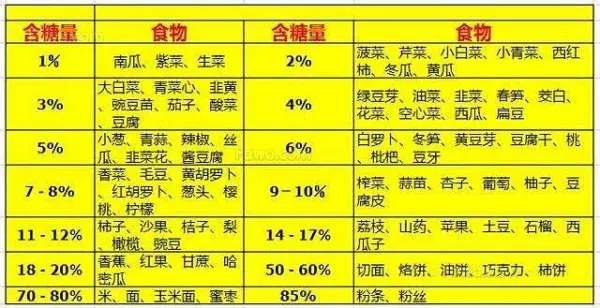
We can refer to the chart above to choose the ingredients thatAvoid foods rich in monosaccharides and disaccharidesThe food is rich in starch and fast digesting, such as honey, pastries, brown sugar, white sugar, avoid drinking diluted rice and other foods rich in starch and fast digesting, it is advisable to eat more cabbage, spinach, cucumber, these low sugar content, rich in dietary fiber food.Eat at least three times a day, each meal is best with a combination of staple foods and coarse grains.The ratio of refined and coarse grains is 6:4, advocating more dry and less dilute, less fried food, in the case of blood glucose control can be appropriate to eat fruits, and should be placed in the middle of the two meals to eat, you can avoid significant fluctuations in blood glucose.
Second, moderate regular exercise!
Try to exercise should choose fast walking, jogging, swimming and other aerobic exercise, exercise until you feel the body heat, sweat, but not sweating profusely, theIt is recommended to start exercising 1-2 hours after meals, 30-60 minutes each time, and at least 150 minutes of aerobic exercise per week.. Sugary/starchy foods that can be eaten immediately should be available during exercise to prevent hypoglycemic events.

(iii) Diabetes patient education!
Diabetes is a chronic disease and we need to be consistent in our diet, exercise and medication! Diabetes patient education not only raises our awareness of our disease and updates our concept of treatment, but also reminds us not to relax our management! It is only through persistence that we can get the maximum benefit!
IV. Regular blood glucose monitoring!
The most direct purpose of treating diabetes is to reach the blood glucose standard, how can we assess the blood glucose level accurately and timely? That can only be blood glucose monitoring, regular blood glucose monitoring can help us to adjust the treatment program, in order to choose the most suitable medication and appropriate dosage for us!
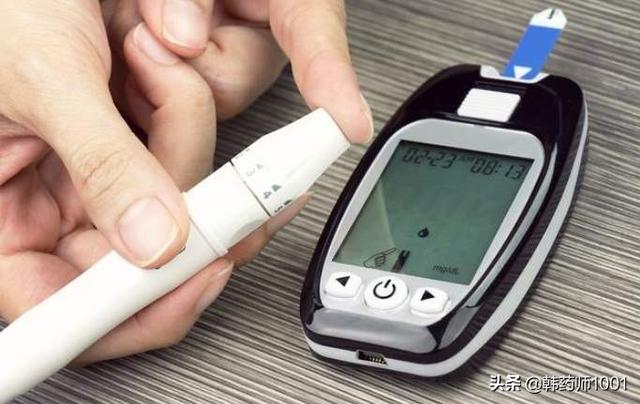
V. Medication!
If you can't reach your blood sugar level through diet and exercise, you should be treated as early as possible. Otherwise you will regret it as the disease prolongs and diabetes complications arise!
There are many medications available for the treatment of diabetes, such as metformin, the cornerstone of type 2 diabetes treatment, glimepiride and repaglinide, insulin sensitizers rosiglitazone, liraglutide, a GLP-1 receptor agonist, rilagliptin, a dipeptidyl peptidase-4 inhibitor, dalgliflozin, an SGLT-2 inhibitor, as well as a variety of insulin, and so on! So there are a lot of glucose-lowering medications to choose from, and which one is best for you? That's a choice that needs to be made by a medical professional after an assessment based on the individual's condition!
Purely handwritten, I hope my answer was helpful! If you think the writing is okay, please like and follow!
The first and foremost question is how high is your high blood sugar? Is it pre-diabetes, or has been diagnosed with type 2 diabetes? The prevalence of pre-diabetes in adults in China is 35.7%. If you are pre-diabetic, you can control your blood sugar by changing your lifestyle and strengthening your physical activity. However, I still recommend that you seek early medical attention, make a clear diagnosis, and then change the factors that can be changed under the guidance of a medical professional. Why do I say change the factors that can be changed? For example, you can't change the genetic factors, early life nutrition and some objective environmental factors, but you can change the dietary factors, insufficient physical activity, obesity or overweight factors.
One should change the original eating habits, three meals a day with coarse and fine, 1/3-1/2 for coarse grains and legumes, eat coarse grains, but to have a quantity, vegetables, two hands, staple food fist two, lean meat, two fingers wide, fruits in the fist. Coarse grains include cereals and legumes, including cereals: corn, millet, red rice, black rice, purple rice, barley, oats, buckwheat, etc.; legumes include: soybeans, mung beans, red beans, black beans, fava beans, peas; tubers: sweet potatoes, yams, potatoes. Coarse and fine with food, each meal both fine and coarse grains, cereals, potatoes, legumes, food varieties average of more than 3 kinds per day, more than 5 kinds per week. Vegetables to leafy vegetables, such as celery, leeks, spinach, oleander, cabbage, cabbage, bitter chrysanthemum, cucumber, winter melon, bitter melon, tomatoes, eggplant and so on. Can be eaten raw, not cold; can be cold, not cooked and fried. ... Protein ((raw weight)) 4 servings per day, including fish (about 80g), lean animal meat (50g), tofu (2 taels), egg (1/day), etc., or equivalent exchange, etc. . One bag of pure milk or one cup of soymilk (about 200ml) per day. . Oils and fats 25g (2-2.5 tablespoons) per day, no fried food, no high cholesterol food such as skin, offal, brain, fish roe, crab, etc. of animals. As much fruit as possible about the size of a fist daily. To eat between meals or before and after exercise (3-4 p.m.). To eat fruits with low sugar content, choose in the order of watermelon, grapefruit, cherries, strawberries, apples, oranges, peaches, pears, etc., and pay attention to equal exchange.
Secondly, we should exercise reasonably, aerobic exercise at least 3 days a week, with no more than 2 consecutive days of interruption, resistance exercise at least 2 times a week, and more muscle strength training; a total of at least 150 minutes of moderate-intensity exercise per week; and sustained sedentary activities for no more than 30 minutes.
Third, you should monitor your blood sugar regularly.
Fourth, if you have persistent high blood sugar, seek early medical attention.
Fifth, timely control with medication is more beneficial than if you don't want to take medication.
[Professional doctor to help you answer]

This is found that people with elevated blood sugar will have the idea, not take glucose-lowering drugs, through lifestyle interventions to bring down blood vessels is not impossible, but depends on the specific situation, when the need to take glucose-lowering drugs, or should be taken in a timely manner is appropriate, then how to do the judgment?
First, it is important to understand the criteria for determining high and low blood glucose, which are stratified by the Chinese Guidelines for the Prevention and Control of Diabetes:
Normal blood glucose: fasting blood glucose 3.9-6.1mmol/L and 2-hour postprandial blood glucose 4.4-7.8mmol/L.
Pre-diabetes: fasting blood glucose 6.1-7.0 mmol/L or 2-hour postprandial blood glucose 7.8-11.1 mmol/L
Diabetes mellitus: fasting blood glucose greater than 7.0 mmol/L or 2-hour postprandial blood glucose greater than 11.1 mmol/L
When in pre-diabetes, through effective dietary control, exercise and other lifestyle interventions, most people can get effective control of their blood glucose after 1-3 months, and some people can keep their blood glucose within the normal range within six months.
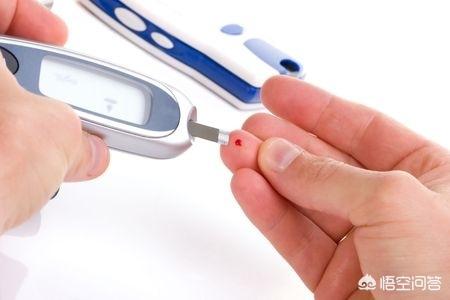
Secondly, when the diagnostic criteria for diabetes have been met, it is important to understand the general condition of the body and to know whether there are any complications of diabetes.
Because the rise in blood sugar often occurs unknowingly, often found that elevated blood glucose, in fact, elevated blood glucose has been a period of time, time blood glucose higher may have complications, this time should be as soon as possible to lower blood glucose, and often need to take hypoglycemic drugs in a timely manner, need to carry out the examination mainly includes: blood lipids, blood pressure, liver and kidney function, urine microalbumin, funduscopic examination, pancreatic islet function, carotid artery Color ultrasound, etc., in order to timely understand the occurrence of complications.
It should be noted that, even if you do not take diabetes, you should also test blood glucose, and should not only measure fasting blood glucose, three meals after the three 2 hours postprandial blood glucose test, because the 2 hours postprandial blood glucose can be understood before and after the meal glucose fluctuations, if the magnitude of the elevation of more than 4mmol / L indicates that blood glucose fluctuations are large, the need for further intensive intervention. If the blood glucose still exceeds the diagnostic standard of diabetes mellitus after 3-6 months of lifestyle intervention, especially when the LDL in blood lipids is more than 2.6mmol/L and the blood pressure is higher than 130/80mmHg, then glucose-lowering drugs should be considered.
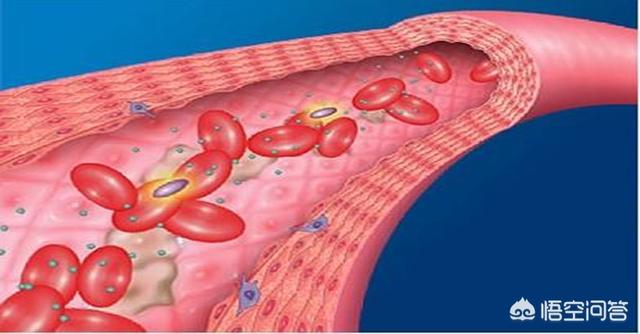
In addition, if the diagnosis of diabetes mellitus and high blood glucose level, should not exclude the use of hypoglycemic drugs, timely use of hypoglycemic drugs can not only bring down the blood sugar quickly, but also more importantly, can eliminate the long-term high blood sugar to the body caused by the "glycotoxicity", to lift the inhibition of the pancreatic islet function of high blood glucose, and at the same time, have more time to develop a good habit of life! At the same time, there is more time to develop good living habits. Many patients can gradually reduce the dosage or even stop taking hypoglycemic drugs after taking them for a period of time.
In short, lowering blood sugar is a must, but the greatest danger of high blood sugar is to cause vascular atherosclerosis and plaque formation, which in turn causes multi-organ pathology, so only focus on the high and low blood glucose is far from enough, through the elevated blood glucose this signal to the whole body to understand the state of health, comprehensive prevention and treatment is the ultimate goal.
I hope this answer can help you, welcome to click on the attention and leave a message, together to learn to understand more about health knowledge.
Can a patient with high blood sugar be brought down to the normal range through a healthy lifestyle without medication? This question has to be looked at in two ways.
First of all, if you have been diagnosed with diabetes by a doctor and need to be treated with hypoglycemic medication, you must take your medication honestly according to your doctor's instructions and never take any chances.

Secondly, if you are pre-diabetic or in the early stages of diabetes and have no other pre-existing conditions, you can lower your blood sugar to a normal range through a healthy lifestyle without medication under the guidance of your doctor. Next, we will analyze what are the healthy lifestyles that can help lower blood sugar?
First, eat regular meals in a 3+1 or 3+2 pattern, with carbs at each meal. And roughly equal carbohydrate intake at each meal. To maximize the maintenance of blood sugar balance.
Second, control total energy intake and keep your weight within the normal range. Overweight is one of the independent risk factors for diabetes, and keeping weight within normal range is one of the goals of comprehensive diabetes treatment. A normal weight is defined as a body mass index (BMI) value of less than 24, which is calculated by dividing weight by the square of height.
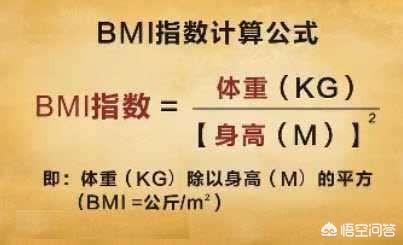
Third, strictly control the total amount of staple foods, increase the proportion of low gi staple foods. Since it is also called the glycemic index, the lower the gi value, the less likely it is to raise postprandial blood glucose zygomatic bones or coarse grains have a much lower gi value relative to refined grains. It is a preferred staple food for diabetics.
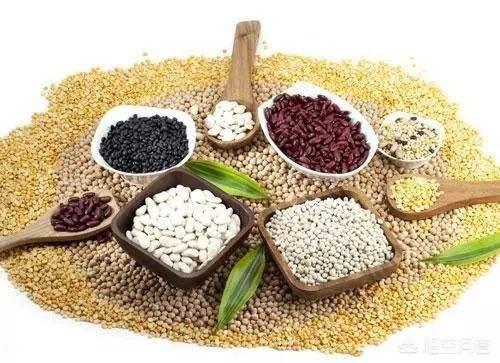
Fourth, increase the intake of vegetables, especially those rich in dietary fiber and those rich in lutein. Dietary fiber can inhibit glucose absorption, lutein helps prevent diabetic eye disease. Dietary fiber-rich vegetables are leafy greens, mushrooms and algae, fresh beans, wild vegetables and vegetables with less water content. Lutein-rich vegetables include broccoli, kale, collard greens, spinach, squash and peppers.

Fifthly, make sure that you have protein foods with your meals. By protein foods I mean fish, meat, eggs, milk and soy products. Eat a complex meal at every meal, while paying attention to the order of meals. Eating vegetables first, then protein foods, and finally the main food during meals helps to balance blood sugar.
Sixth, abstain from sweets and sweet drinks, but fruits are allowed, especially those with lower gi values, such as apples, pears, peaches, plums, cherries, grapefruit, etc. can be used as a choice for additional meals.
Seventh, scientific exercise. Exercise has therapeutic value for hyperglycemia, and its therapeutic value includes the fact that physical activity itself can lower blood glucose, as well as help with weight loss and maintenance of an appropriate body weight, in addition to the fact that exercise can improve insulin sensitivity, which is conducive to the control of inflammation and the prevention of cardiovascular and cerebrovascular disease. For people with high blood sugar, we recommend at least 150 minutes of moderate-intensity aerobic exercise per week and encourage people with diabetes to perform resistance exercise three times per week.

Diabetes is a chronic disease that is closely related to lifestyle, and it is very possible to keep your blood glucose within normal limits by doing the above seven things.
Answer: Sun Jihong, Licensed Pharmacist, Registered Dietitian, Member of the Chinese Nutrition Society. Headline: Registered Dietitian Sun Jihong.
First, it is possible to lower blood sugar through a healthy lifestyle, just that some people can achieve normal blood sugar levels, while others still need medication to assist in lowering blood sugar.
There used to be a patient, a really big fat guy, maybe 200+ pounds, who said he liked to drink coke and eat high-calorie foods like fried chicken and barbecue, and was diagnosed with diabetes in his 30s. He came to the hospital for treatment, and in the early days he was treated with medication 💊 intensive therapy, and then the patient realized the importance of good health and started to control his weight. He lost more than 20 kilograms by his own account, and later, after stopping the medication, his blood glucose was close to normal levels, which should be considered a good result.
Therefore, it is possible to "reverse" diabetes through a healthy lifestyle, such as controlling your weight, exercising more, drinking more water, eating more fresh fruits and vegetables, eating fewer staple foods, and eating less oil.
Second, everyone has different blood sugar levels and different treatment options for different conditions.
For example, there have been diabetic complications, such as cerebrovascular accidents in diabetic patients, diabetic peripheral neuropathy, etc. need to actively control blood sugar. Take medication when you need to take medication, and take insulin when you need to take insulin.
Third, actively monitor your blood sugar.
Regardless of taking medication or not, you need to regularly monitor your blood glucose to assess your blood glucose, after all, high blood glucose can lead to a variety of complications, we had a patient with a fracture who had a slow healing surgical incision, and then he was given a blood glucose test and found that his blood glucose level was basically greater than 13 mmol/l, and that with good control of his blood glucose, the incision healing would be better.
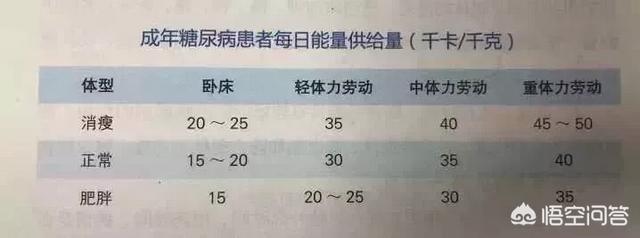
For more health tips, feel free to follow me, like it, give me a like #ClearBreezeProject #TheTruthComesTrue
If there is high blood sugar patients, that is, patients with diabetes, want to rely entirely on a healthy lifestyle to control blood sugar is more difficult, because the abnormal rise in blood sugar is mainly due to the body's insulin secretion is abnormal, for the body's sugar metabolism is abnormal caused by the fasting blood glucose rise.
Many people may want to adjust the diet to control blood glucose, in fact, by adjusting the diet can control only postprandial blood glucose, for fasting blood glucose only through dietary adjustments is not ideal.
Therefore, the most ideal way to control blood sugar is through the use of drugs, the more common such as Bayerisepine, Metformin, etc. can play a very good effect of lowering blood sugar, and if it is difficult to effectively control blood sugar patients through the use of drugs, generally can also be injected through the method of insulin to control blood sugar.
Of course it does not mean that a healthy lifestyle is not good for controlling blood sugar, it just means that you can't completely rely on a healthy lifestyle to control blood sugar, and you still need to do it in your regular time.
Control diet. The usual time must control the intake of sugary foods, such as too sweet when starchy foods are needed to eat less, because after entering the body will be converted to the body's blood sugar, will increase the body's blood sugar concentration.
Appropriate exercise. Physical exercise can effectively stimulate insulin in the body, increase the activity of insulin, can effectively promote insulin to carry out some of the breakdown of blood sugar.
Weight loss. Obesity of the body will lead to the body's sugar metabolism is difficult, easy to cause blood sugar rise, through appropriate weight loss for the control of blood sugar has a very good help.
Thanks for the invite.
Do not take medication to this point do not decide without authorization, it is best to follow the doctor's instructions to determine the。
Mild hyperglycemia patients also do not need to take medication, from improving the daily diet and lifestyle habits can play a good conditioning effect, but if it comes to the necessity of taking medication or injecting insulin if you refuse, through a healthy diet and lifestyle may not be able to control blood glucose in a short period of time, and the threat to our body may be greater.We take hypoglycemic pills, insulin injections plus dietary regimens are actually stopping the damage before we gradually regulate ourselves to the point where we try not to have to take any medication at all,Reducing the threat of high blood sugar, such as a terrible glycated hemoglobin value, are more prone to complications later in life, such as extremely fluctuating blood sugar, dizziness, and a poor state of mind every single day. Especially if the blood sugar is persistently high, it means that our cells utilize glucose very poorly, and the body will always be forced to break down fat to supply energy, which may lead to ketoacidosis, three highs and one low, or suddenly lose weight, which is a great threat to health. So it's time to eat to eat to eat, and it's time to inject insulin or main color insulin.
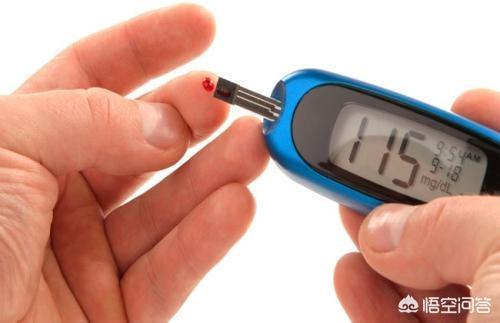
If the friends who already have diabetes refuse to take medicine and insulin injection, it may be a greater threat to the body, diabetes is irreversible, and there is no way to find a cure for diabetes, especially for diabetic patients whose pancreatic islet cells are basically damaged and unable to release insulin, if they still give up to take medication or insulin injection, the complication will surely come to their doorsteps earlier, and then it is the beginning of the real pain. Of course.Patients with hyperglycemia or pre-diabetes who have not yet progressed to diabetes are very promising to reverse back to normal blood glucose if they have dietary and lifestyle interventions, and manage their blood counts and weight wellSo we all still need to have confidence in ourselves, so how can we improve our blood sugar?
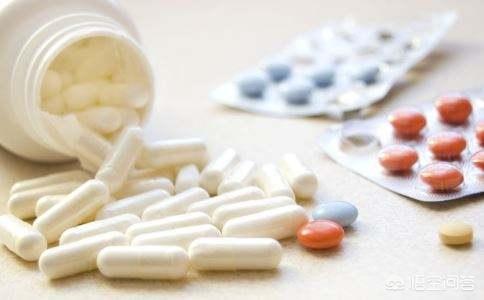
First of all, the total daily calorie intake should be controlled, avoid overeating, where seven minutes of satiety is appropriate. Many patients with high blood sugar are caused by insulin resistance, insulin action is less efficient, insulin sensitivity is lower, the ability to perceive blood glucose is reduced, and can not act quickly. So the daily diet is best to light, avoid high oil, high fat and high sugar diet, more of their own cooking and eating at home, seasoning and cooking oil is appropriate to put, do not go down to the restaurant every day to order takeaway. Details of the part to keep the following points are best to do:
①Avoid foods with a lot of added refined sugar, and consume foods with natural sugars appropriately.
Patients with high blood sugar naturally want to leave more space for insulin to smooth blood sugar, so their own added more sugar food is best avoided, especially in the pre-diabetes patients, in order to reverse diabetes should control their mouth, such as desserts, sweet drinks, candies, cold drinks, and other food is best eaten sparingly. Some foods containing natural sugars pay attention to the amount of intake, such as fruits, staple foods, they have their own dietary fiber to help stabilize blood glucose, and the appropriate amount of sugar, but can not be too much, a one-time fruit intake is not recommended more than 200g, no more than 250~350g per day. staple foods per meal is recommended to be a small bowl (10cm in diameter), do not have too much, and it is best to "coarse and fine" in the white rice. Matching" in the white rice to add coarse grains and beans mixed to stabilize blood sugar, or potato food instead of staple food is also a very good way.

②Choose more coarse, dietary fiber-rich foods to eat, and eat smaller, more frequent meals.
Coarse texture, dietary fiber-rich foods digested naturally take longer, but also inhibit the absorption of fat, sugar, cholesterol, so for the smooth postprandial blood glucose is very helpful, such as just mentioned that our staple food can be "coarse and fine combination", in the fine grains of white rice to add a mixture of coarse grains, not only to improve the diversity of food, increase the nutrient content, but also slow down the speed of digestion to stabilize blood sugar. Nutrients, but also slow down the speed of digestion to stabilize blood sugar. Increase the proportion of vegetables and whole grains in your daily life, with vegetables accounting for about 50% of your daily intake. You can adopt the "small meals, many meals" approach to assist in stabilizing blood glucose, do not eat too much at one meal, blood glucose does not rise quickly, and have one more meal when you are hungry, so as not to let yourself be starved and hypoglycemic, and stabilize your blood glucose in the appropriate range at all times.

③Test your own blood glucose more often and maintain normal blood and weight ranges
Observe the changes of your blood glucose to see if it can be maintained in a relatively stable range, and adjust your diet at any time. In addition, you should also test your own blood routine, such as blood fat, blood pressure, high blood fat or high blood pressure will increase insulin resistance, also is not conducive to blood sugar control. Weight should also be maintained in the normal range, obese sugar patients try to lose weight to adjust their weight, obesity will also increase the burden of insulin secretion, insulin resistance.
Finally, sugar patients should pay attention to the best in the adjustment phase to quit smoking and alcohol, tobacco and alcohol is very easy to increase blood viscosity, inducing the existence of a variety of cardiovascular and cerebral vascular disease, may increase the burden of insulin secretion and let the blood glucose can not maintain a stable.
Dietitian Sugar is here to answer your questions. People with high blood sugar can certainly lower their blood sugar through lifestyle intervention, but whether they can lower their blood sugar to within the normal range depends on their specific condition.
When many people find out about diabetes, they are confused when they hear the doctor say that they have to take long-term medication and insulin, and they start to reject injections and medication from the inside. It is true that a small number of diabetic patients can control their blood glucose up to the standard without injections or medication, but these patients often find out their condition at an early stage, the damage to the pancreatic islet function is not very serious, and the degree of glycation is not high, and they have strong self-control, and are able to adhere to food control and exercise for a long period of time.
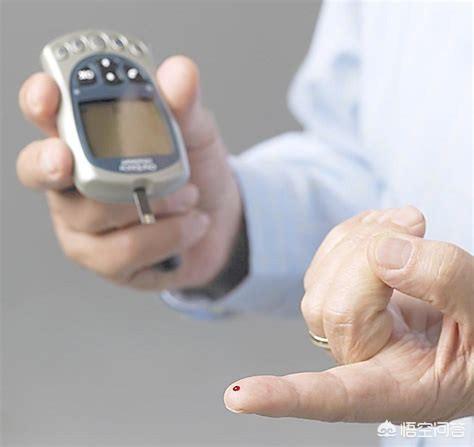
But the fact is that most diabetics can't get their blood sugar up to standard without the help of medication. Because diabetes has a certain degree of invisibility, especially type 2 diabetes, many people find out when the blood sugar has been high for several years, the pancreatic function has been damaged more seriously, only rely on diet and exercise and other lifestyle interventions can only assist in lowering blood glucose, unable to control blood glucose up to standard.
So, diabetes is a very bitter disease, once labeled as diabetes has to be controlled for life. Even if the early blood sugar is better, did not reach the standard of medication, but later if the indulgence is not controlled, the pancreatic islets will still be gradually damaged, have to use drugs.
You are welcome to share your own sugar control experience in the comments, and if you have any questions related to sugar control and complications, you can also ask them in the comments, and Sugar will patiently answer them for you.
Taking medication is not the only way to bring down elevated blood sugar. Living a controlled diet and maintaining a healthy lifestyle can indeed be conducive to lowering blood glucose levels, but whether or not it can be lowered to the normal range, that's not necessarily the case.
For some patients who are detected early and only have mildly elevated blood glucose levels, dietary control can be the first attempt to improve blood glucose.
Dietary control includes: eating less food with high sugar content, improving the diet structure, reducing the amount of fine flour and white rice, and replacing them with coarse grains. At the same time, fruits, pastries and other foods that tend to raise blood glucose levels should also be eaten sparingly.
If after improving your diet and controlling your diet, your blood sugar levels normalize, then you can continue to stick to this good habit and do your blood sugar testing. If it still doesn't work after control, then it's time to consider medication or insulin intervention.
So, can you lower your blood sugar in the normal range by not taking medication, just exercising or controlling your diet, this must vary from person to person while observing the specific situation. If you can, naturally very good if not, then do not try to be brave, and listen to the doctor.

Normally, our fasting blood glucose level should be less than 6.1mmol/L and two-hour postprandial blood glucose level should be less than 7.8mmol/L. When it exceeds this level, it is considered elevated blood glucose. For people with elevated blood glucose, the presence of diabetes should be clarified. When the fasting blood glucose exceeds 7.0mmol/L and/or the two-hour postprandial blood glucose exceeds 11.1mmol/L and/or the fasting blood glucose exceeds 11.1mmol/L, diabetes mellitus should be considered as a possibility.

And when our blood glucose level exceeds the normal level but does not meet the diagnostic criteria for diabetes, it is considered as pre-diabetes. For pre-diabetic patients, we should pay attention to improve the lifestyle without the need of medication in order to prevent the occurrence of diabetes. And for patients with existing diabetes, it is recommended to start medication along with active lifestyle intervention.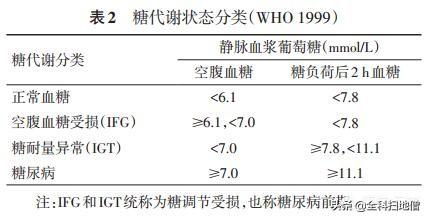
There are two main types of diabetes, type 1 diabetes and type 2 diabetes, in which type 1 diabetes is absolute insulin deficiency and requires long-term insulin or drug replacement therapy. type 2 diabetes is caused by partial insulin deficiency and/ or insulin resistance in peripheral tissues, therefore, for newly diagnosed type 2 diabetes, especially type 2 diabetes patients with predominantly insulin resistance, if there is no corresponding acute or chronic complications Therefore, for newly diagnosed type 2 diabetes mellitus patients, especially those with predominantly insulin resistant type 2 diabetes mellitus, if there is no corresponding acute or chronic complication, the lifestyle intervention can be carried out for one to three months, if the fasting blood glucose can be reduced to within 7.0 mmol/L, the postprandial blood glucose can be reduced to within 10.0 mmol/L, and the glycated hemoglobin can be reduced to within 7%, the lifestyle intervention can be continued without the use of medication for the time being, however, if the target has not been reached, then the medication must be started.
Diabetic patients in daily life should pay attention to a reasonable diet, three meals at regular intervals, strict control of the total daily calories, eat more fresh vegetables; to appropriate exercise, aerobic exercise is the main focus, talking about gradual; to control weight, obese people pay attention to weight loss; also to rational use of medication, medication should be individualized, if necessary, can be used in insulin replacement therapy. We should also pay attention to monitoring the changes of the condition and regular review at the same time of regular treatment.
This article has been written by GP Sweeps and we hope it has been helpful. Please correct any deficiencies, the article is for reference only and is not intended as medical advice.
This question and answer are from the site users, does not represent the position of the site, such as infringement, please contact the administrator to delete.